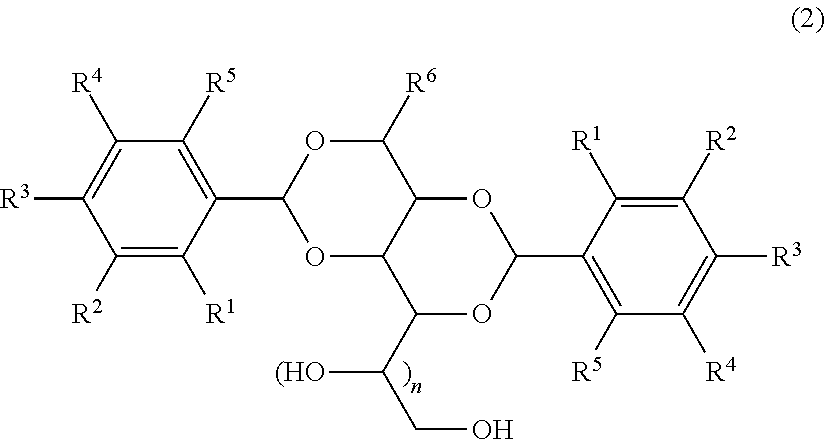Polypropylene-based resin composition
a polypropylene and resin technology, applied in the field of polypropylene-based resin composition, can solve the problems of deterioration of fitting accuracy, aperture quality, polypropylene molded articles, etc., and achieve excellent mechanical properties, excellent dimension stability, and excellent injection molding.
- Summary
- Abstract
- Description
- Claims
- Application Information
AI Technical Summary
Benefits of technology
Problems solved by technology
Method used
Image
Examples
examples
[0136]The present invention will be illustrated further specifically based on examples below, but the present invention is not limited to these examples.
[0137]In examples and comparative examples, measurement and evaluation of physical properties were conducted by the following methods.
[Melt Flow Rate (MFR) (g / 10 Min)]
[0138]Melt flow rate was measured under conditions of a test load of 2.16 kg and a test temperature of 230° C., according to ISO 1133.
[Intrinsic Viscosity [η]]
[0139]About 20 mg of a sample was dissolved in 15 ml of decalin, and the specific viscosity ηsp was measured in an oil bath of 135° C. To this decalin solution, 5 ml of decalin solvent was additionally added for dilution, and thereafter, the specific viscosity ηsp was measured in the same manner. This dilution operation was further repeated twice, and the value of ηsp / C when the concentration (C) was extrapolated 0 was determined as the intrinsic viscosity [η].
[η]=lim(ηsp / C)(C→0)
[Amount of Decane-Soluble Part (Ds...
examples 1 to 4
, Comparative Examples 1 to 3
[0177]The propylene-based polymer (A), the propylene homopolymer (B), the ethylene-α-olefin copolymer (C), the inorganic filler (D) and the nucleating agent (E) were mixed according to blending amounts shown in Table 1, and extruded by a twin screw extruder (TEX (registered trademark) 30a, manufactured by The Japan Steel Works, Ltd.) under conditions of a cylinder temperature of 180° C., a screw rotation speed of 750 rpm and a discharge amount of 60 kg / h, to obtain a polypropylene-based resin composition.
[0178]The physical properties of an injection molded article (test piece) produced from the resultant each polypropylene-based resin composition are shown in Table 1.
TABLE 1Comp.Comp.Comp.(unit)Ex. 1Ex. 2Ex. 3Ex. 4Ex. 1Ex. 2Ex. 3BlendingComponent (A)A-1parts by mass13161313161313CompositionComponent (B)B-1parts by mass10.515.510.510.52516.510.5B-2parts by mass16816163.51616Component (C)C-1parts by mass25.525.525.525.520.525.525.5Component (D)D-1parts by ...
PUM
| Property | Measurement | Unit |
|---|---|---|
| melt flow rate | aaaaa | aaaaa |
| melt flow rate | aaaaa | aaaaa |
| melt flow rate | aaaaa | aaaaa |
Abstract
Description
Claims
Application Information
 Login to View More
Login to View More - R&D
- Intellectual Property
- Life Sciences
- Materials
- Tech Scout
- Unparalleled Data Quality
- Higher Quality Content
- 60% Fewer Hallucinations
Browse by: Latest US Patents, China's latest patents, Technical Efficacy Thesaurus, Application Domain, Technology Topic, Popular Technical Reports.
© 2025 PatSnap. All rights reserved.Legal|Privacy policy|Modern Slavery Act Transparency Statement|Sitemap|About US| Contact US: help@patsnap.com


